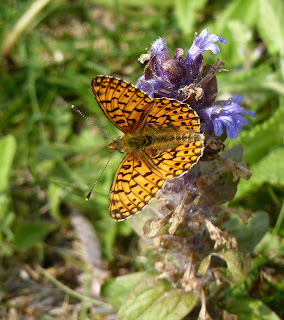A short trip down to the Somme this weekend, to find the sun and any birds that might be around. We took the
Cantello bible and called in at some of his suggested sites down the coast from Calais. Wissant marsh was the best, with fine views of pools, marsh, dunes and reedbeds.
Nightingales and warblers kept up a constant song in the scrubbery.
Then down to Crecy forest in Picardy, where the target species was black woodpecker, or pic-noir as they say en France. The beech stands are huge, but interesting habitats are easily found, where areas have been cut down.
This ride was particularly rich in birds, which flew between the shelter of the large trees and the food in the low scrub across the path. I was pleased with my first ever willow tits, showing clearly brighter cheeks than the familiar marsh tits, and was trying to id a possible melodious warbler when a strange sound came from the trees ahead.
Was it a raptor or a woodpecker? It sounded a bit like a greatspot and a bit like a sparrowhawk, but louder than either of them. A different sound was then heard - a plaintive (but still loud) falling note. A large black bird flew across and we were in hot pursuit, and were lucky enough to see a female black woodpecker about 100 yards away across a clearing. Then she was gone, but what a memorable sight.
We enjoyed the setting sun on the coast at Le Crotoy, as at home the coast points the wrong way and we don't see the sun go down. It's much more civilised this way round. All you need is the sun and a sundowner.
The night was spent at the pleasant little town of Rue, just inland, and this allowed an earlyish visit to Sailly Bray and the forest (again). Not early enough though, as the target species had presumably sung themselves to breakfast and were now mostly invisible. The peace and quiet of the wetlands and the forest was a pleasure in itself, though, with nobody about and especially no irritating dog-walkers who would have invaded such a wood in Britain in droves.
Then on to the Marquenterre reserve. Not a subtle place but constantly interesting with well-designed hides and walks, and well-behaved punters. I'm quite getting to like the French.
Seven lovely black-necked grebes were on the lakes, in their stunning breeding plumage.
A surprise was a pair of black-winged stilts, trading insults with the perennially aggressive avocets.
The heronery was its usual noisy place of burps, whines and clattering, with spoonbills, white storks, little and cattle egrets and grey herons, some with fledgling chicks.
It was a lovely trip, made even better by
















